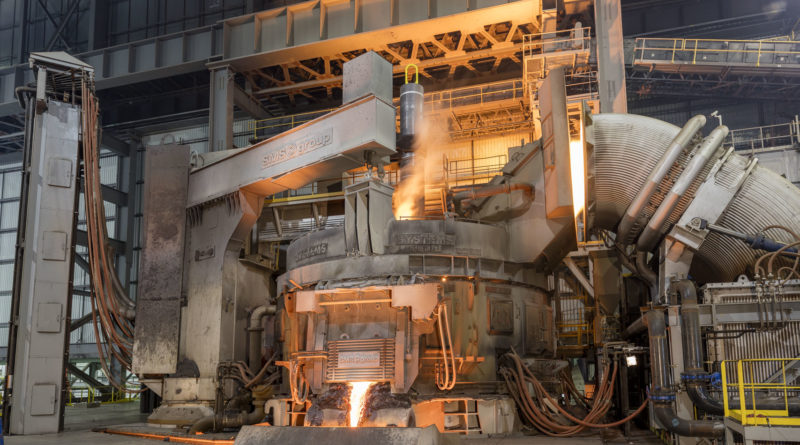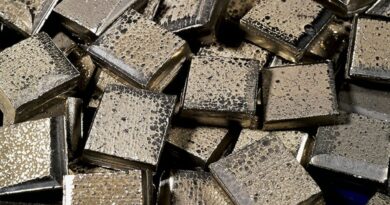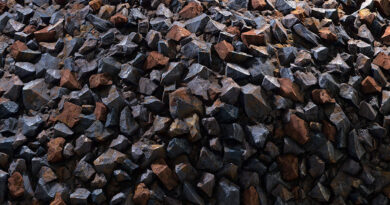Electric arc furnace in stainless steel process
The main purpose of EAF is to melt scrap with electricity and hence make it possible to perform melting and decarburization in two separate unit operations (i.e. EAF and AOD), although it is possible to perform decarburization also in the EAF. Since melting is in question, one of the most important things to be considered is obviously the heat transfer between the electric arc and the metal.
Other key elements in the control of the EAF process are to prevent the oxidation of chromium (if/when chromium-alloyed scrap is being used), to stabilize the arc and to minimise specific energy consumption as well as to create a foamy slag that protects the refractory materials from the electric arc, lowers energy consumption, stabilizes the arc and insulates the metal from the atmosphere.
The process variables that can be used to control these phenomena are the amounts and compositions of the raw materials, FeSi and coke additions, use of slag formers and the use of electricity at different stages of the process.
Heat transfer between the arc and the metal with different currents and arc lengths has been studied with computational fluid dynamics (CFD) in which the arc is treated as a fluid with temperature-dependent properties.
The model in which various mechanisms of heat transfer (i.e. radiation, convection, condensation and energy transported by electrons) were taken into account indicated that although the contribution of electrons on the heat transfer is significant at the centre of the system, the radiation and convection seem to be more dominant in general.
The longer the arc, the more dominant is the role of radiation in the system. In addition to CFD, physical modelling has also been used in the investigation of the injection treatments in the EAF. The effect of lance height, lance angle and gas flow on the cavity that is formed at the melt surface when blowing oxygen into EAF is one of the applications for which the physical water models has been used in the context of EAFs.
The oxidation of chromium in the EAF process has been studied with thermodynamic calculations, according to which the oxidation of chromium may be decreased with aluminium and silicon additions, since these two elements have a higher affinity for oxygen than chromium. On the other hand, the oxidized chromium may be reduced from the slag back to metal by using ferrosilicon, carbon, calcium carbide or aluminium.
When modelling the oxidation reactions, one always has to consider the competing oxidation reactions of carbon, chromium and silicon as well as in some cases aluminium and titanium.
Studies concerning the reduction of Cr2O3 as well as other oxides (MnO, FeO and SiO2) from the EAF slags by using either carbon or aluminium as reductant indicate that the reduction is controlled by diffusional mass transfer in the slag phase.
The mass transfer coefficient describing the diffusion rate of a certain oxide in the slag was found to be largest for MnO and clearly smallest for SiO2.
The coefficients describing the mass transfers of Cr2O3 and FeO are close to one another and slightly smaller than the one for MnO, although considerably higher than the one for SiO2. However, the overall reduction degrees of these oxides decresed in the order of MnO (90 %), Cr2O3 (70 %), SiO2 (59 %) and FeO (40 %). (Park et al., 2004)
EAF slag’s ability to generate foam from injected or generated gas can be quantified with the foam index, Σ, for which the mathematical definition as well as the correlation with the slag properties exists.
It has been observed that as the Cr2O3 content of the slag is increased, the foam index stays constant for a while (up to approximately 8 %), after which there is a small increase in the values of the foam index in the Cr2O3 content range of approximately 8 to 13 %. If the Cr2O3 content is further increased, the excessive Cr2O3 begins to precipitate as a solid phase which increases the viscosity of the slag and hence decreases the values of the foam index very rapidly. The critical Cr2O3 content over which the foam index decreases depends on temperature, slag composition and oxygen potential.
It has been concluded that the occurrence of solid Cr2O3 particles in the slag is one of the reasons why slag foaming in stainless steelmaking is not as efficient as in the production of low-alloyed steels.
Another difference concerning the slag foaming between the productions of stainless and low-alloyed steels is the amount of FeO in the slag. In the stainless steelmaking the FeO content is usually considerably lower and hence the CO gas which is required for the slag foaming is not generated via the reaction between FeO and carbon, but via reactions of other oxides (e.g. CrO and Cr2O3) and carbon. Since the reaction rates for the reactions between chromium oxides and carbon are significantly lower than the one for reaction between FeO and carbon, it can be concluded that the CO formation is considerably slower when considering the production of stainless steels.
The modelling of the electric arc itself and its influence on the chemical and physical phenomena occurring in the EAF is very complicated (cf. SAF). Even if the nature of the arc and its influence on e.g. chemical reactions were known, the modelling would be little more than educated estimations due to extremely high temperatures (which cannot be measured accurately) and the lack of material data and information in such high temperatures.
Source: Eetu-Pekka Heikkinen and Timo Fabritius: Modelling of the Refining Processes in the Production of Ferrochrome and Stainless Steel, University of Oulu, Finland




